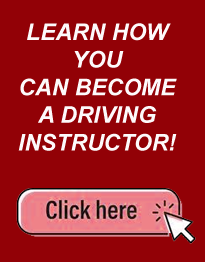
TIPS FOR TRAINING TEENAGE DRIVERS If only training a teenage driver were as simple as jumping into the car with your teen and cruising down the street, there would be no discomfort doing it. However, training a teenager to drive involves proper attitude, emotional control, habit development, physical coordination, judgment development, knowledge improvement, and communication. And the teen has goals too, freedom, freedom, freedom. The parent who will do most of the coaching, and coaching is what on-the-road training really is, will probably feel uncomfortable about starting the task. Here are five tips to help the training process. The first three focus on the coach and the last two on the rookie. 1. Make it all about the driving When you're in the car, be a driving coach who gives the rookie your full attention for the recommended hour or so that you are out together, and make the time all about driving. Don't make or take calls or otherwise distract yourself, and do leave homework, room cleaning, and discipline matters out of the car. When you're a beginner or training a beginner, the stress of being in the training mode makes an hour last a long time. You may see signs of loss of focus or composure if you go too long. 2. Make sure that the fundamental skills are solid It's hard for an experienced driver to recall what it's like to learn to steer smoothly in just the right increments or apply smooth pressure to the gas and brake. At first, your rookie will likely press the gas while also pressing to turn the wheel at an intersection. It takes practice to do different things with hands, feet, head and eyes just to make a turn. Adding eye control, lane placement, and looking in the mirror and signaling while driving straight complicate any lesson. But when those fundamentals need work, don't make a driving session only about them. Start the lesson with work on a fundamental skill then go on to some driving to integrate what was learned. Each lesson should be a positive experience. 3. Have a plan Choose where to teach the lesson based on what you want to teach. Don't let the road you take surprise you with lane changes or tricky intersections before the student is ready to handle them. Your eventual goal is to have the student drive on his/her own, so as each progresses give fewer instructions. In the beginning, you need to say “put on the signal, take your foot off the gas, brake, turn right at the intersection” and later you can say “take the next right.” 4. Keep in mind the effect you want on the new driver In any psychomotor activity including sports and driving, the best performance comes when one is mentally alert and physically relaxed. The rookie driver is going to make mistakes, so learning how to continue on after a mistake is important. Noticing when the rookie does the right things and remarking when the mistakes get fewer increases confidence in performance and in the instructor. Keep the atmosphere light if you can. 5. Directly counter your teen's driving misconceptions Everything your teen knows about actual driving comes from observing movies, television, games, racing shows, stunt shows, local show-offs and you. Your teen has not “observed” the mental game of anticipating conditions and other drivers' actions, or of the preparation it takes to put oneself in the correct lane or on the right road. Your teen may have bought into “style” driving, not realizing the styles depicted on film are meant to show something about the characters, not real driving. Your teen will tend to drive like you do but without the experience you have. You will need to address these topics head-on and discuss them because your rookie doesn't know how little he/she really knows. While it may be a little scary, teaching your teen to drive can bring out a real heart-to-heart connection. |
| » Home | Driving Schoool Classes | Tips for Parents | Contact Us |
